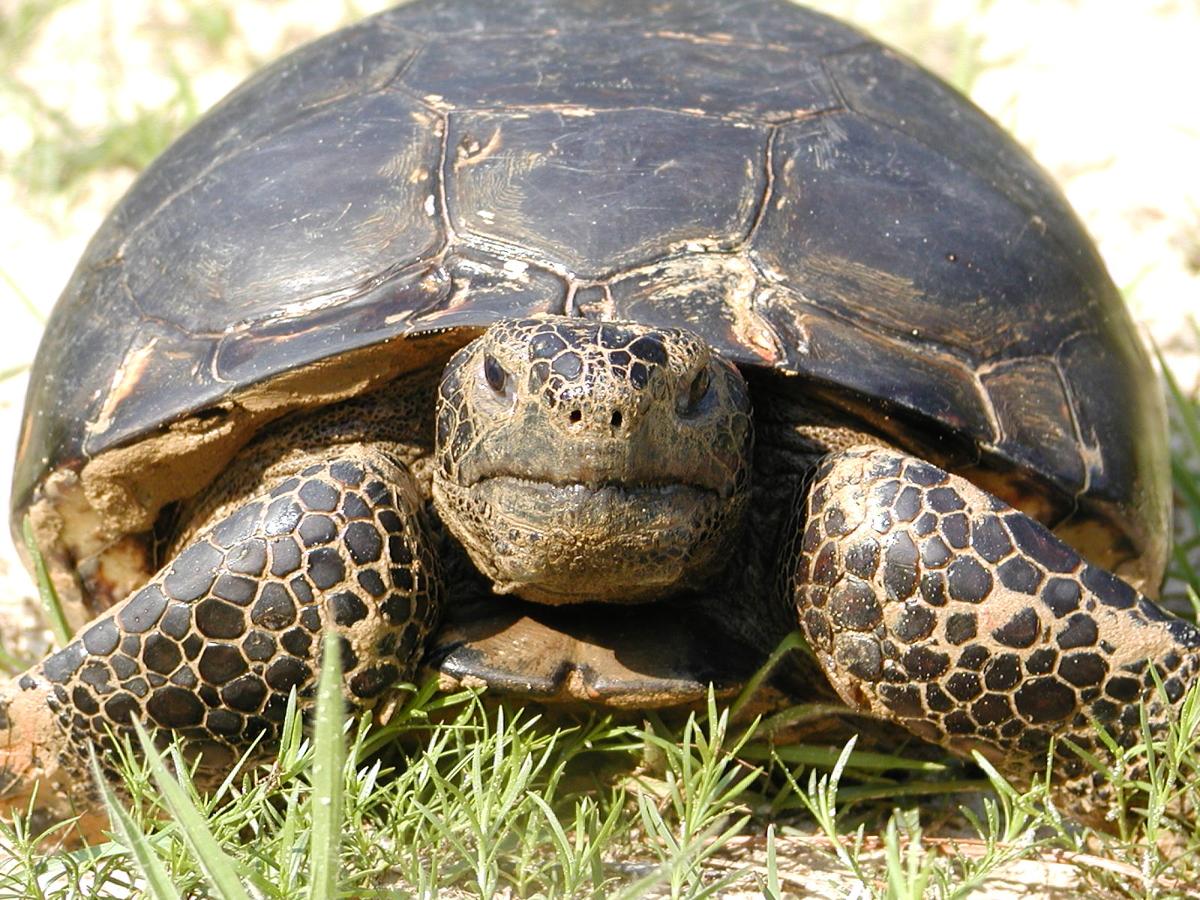D: Yaël, down in the longleaf pine forests of the Southeastern U.S. lives a reptile known for saving its neighbors’ lives. It’s the gopher tortoise, and in Florida and nearby states this tortoise digs burrows that act as shelters for over 350 other species.
Y: Don, the gopher tortoise earned its name because its uses shovel-shaped front legs to dig deep below-ground, creating burrows that protect itself and other animals from summer heat, winter cold, and roving predators. And when fires break out in these forests, animals living at ground level can find quick refuge in these burrows.
D: For millennia, periodic fires have maintained the open understory of the longleaf pine forests—that’s the area near the ground where tortoises and other animals nest and dwell. Without these fires, the understory would be choked by the encroaching weedy shrubs that block the sunlight and overrun other vegetation.
Y: The gopher tortoise doesn’t seem to mind sharing its abode with other animals seeking a hideout. That includes rattlesnakes, eastern indigo snakes, gopher frogs, burrowing owls, and many small invertebrates. After all, the tortoise’s hard shell protects it from any danger posed by its guests.
D: Its service makes the gopher tortoise what we call a keystone species, which means a decline in its population impacts the whole ecosystem. The region’s original 90 million acres of longleaf pine forests has dwindled by 97%, threatening the gopher tortoise populations and the many populations dependent on them.
Y: But forest managers in Florida and other states are using managed fires to clear overgrowth, which allows grasses to come back and provides space for basking and nesting.










